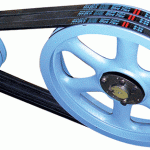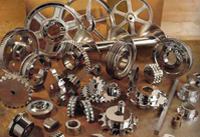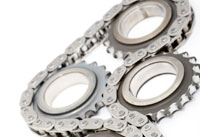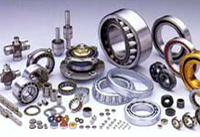
Image Via MachineDesign
A V-belt, also known as a friction drive, is a transmission belt that is a crucial component to various machinery including automobile steering, air conditioning compressors, water pumps, automobile alternators, industrial machinery, agricultural machinery, and more! Many individuals or businesses will find themselves in the position of needing to size a V-belt and doing so correctly is very important or the machinery will not function properly. Whether you are building something new, redesigning something, or repairing something, there are a different ways to correctly size a V-belt.
First, if you are replacing a V-belt or redesigning a system it is important to note that you should not measure by the diameter of the V-belt. The measurement you need is actually the circumference of the belt which is why you should use a soft measuring tape or other measuring tool. Further, you will need to also measure the width and depth of the V-belt.
Next, if you are building new machinery you will need to consider a few factors when sizing your V-belt. Think about the project on which you are working and determine how much horsepower you need, what speed you need, etc. It Still Runs provides a helpful step-by-step explanation of how to size a new V-belt without the assistance of an old V-belt for measuring:
Measuring Belt Length without an Existing V Belt
- 1: Wrap 1/4 inch nylon rope around both pulleys. Overlap 4 inches of the nylon rope.
- 2: Draw a line across the nylon rope with a black permanent marker. Make sure the mark crosses both sections of overlapped nylon rope.
- 3: Lay the marked nylon rope on a flat surface.
- 4: Measure the distance between the two marks with a tape measure to determine the circumference of the needed V belt.
There are many different types of V-belts so not only are correct measurements important but you must also consider what type of V-belt you need. Browning, a V-belt manufacturer, recommends that you follow these guidelines: identify the cross-section, determine if the V-belt is wrapped or notched style, determine the V-belt length. Any time you are sizing a V-belt it is a good idea to consult manufacturer specifications and see what their recommendations are for correct sizing to ensure that you choose the right V-belt for your unique application.


















